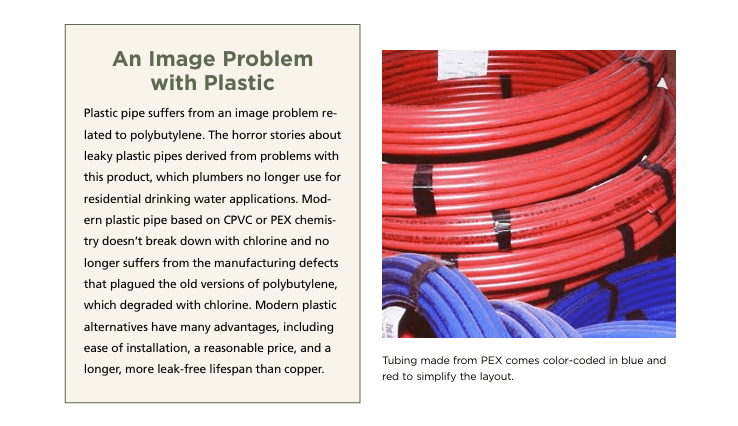When building or renovating a home, the choice of best plumbing pipes directly impacts cost, efficiency, and long-term reliability. Modern homebuilders now have more options than ever before: traditional copper, flexible PEX, and cost-effective CPVC dominate residential projects, each with unique advantages.
This guide breaks down the best plumbing pipe materials for modern homes and explains which pipe saves money, reduces labor, and lasts the longest.
Best Plumbing Pipes
1. Copper Pipes: Traditional but Costly
Copper has been the industry standard for decades due to its durability and proven track record.
Pros:
Long lifespan when installed in the right environment.
Resistant to UV exposure and suitable for hot and cold water.
Recyclable and familiar to most plumbers.
Cons:
High material cost compared to plastics.
Prone to corrosion and leaching, especially in aggressive water or soil conditions.
Labor-intensive: requires soldering, fittings, and careful routing, increasing installation costs.
Builders today often reserve copper for main supply lines or areas requiring code compliance, while using plastics for cost efficiency elsewhere.
2. CPVC: Cost-Effective and Easy to Install
Chlorinated Polyvinyl Chloride (CPVC) is a popular choice for budget-friendly residential plumbing.
Pros:
Costs about one-third of copper and saves 40–50% on labor.
Simple installation using solvent-welded fittings—no soldering needed.
Resistant to chlorine and safe for hot and cold water applications.
Proven 50+ year lifespan in protected conditions.
Best Use Cases:
Standard trunk-and-branch systems.
Homes where budget control and reliability are key priorities.
Regions where copper corrosion is a known issue.
3. PEX: The Flexible Modern Standard
Cross-linked Polyethylene (PEX) has become the most popular pipe for residential plumbing because of its flexibility and efficiency.
Pros:
Highly flexible, reducing the need for elbows and fittings.
Supports home-run plumbing with a central manifold, improving flow.
Faster installation saves 30–50% in labor costs over copper.
Resistant to freezing and ideal for under-slab loops without joints.
Cons:
Slightly more expensive than CPVC in material cost.
Requires special crimping or expansion tools for fittings.
May face perception issues due to historic problems with older plastic pipes (like polybutylene).
When PEX Is Best:
Projects where labor speed and leak prevention are critical.
Homes with multi-story layouts needing long continuous runs.
Energy-efficient homes where water conservation matters, since home-run systems reduce waste.
4. Other Options: HDP and PPR
While less common, these materials appear in specific applications:
HDP (High-Density Polyethylene): Best for cold-water lines and buried applications; welds create seamless, leak-proof joints.
PPR (Polypropylene Random Copolymer): Highly durable and resistant to hot water but costs ~28% more than CPVC and requires special tools.
5. Choosing the Right Pipe for Your Project
When selecting the best pipe material, consider:
Budget: CPVC is the cheapest; PEX is a mid-range choice; copper is the most expensive.
Labor Savings: PEX provides the greatest labor efficiency.
Longevity & Reliability: PEX and CPVC now match copper in lifespan without its corrosion risks.
Local Codes: Some municipalities restrict certain plastics; always verify before purchasing.
Best Plumbing Pipes: Quick Comparison Table
| Material | Cost | Labor Time | Durability | Best Use |
|---|---|---|---|---|
| Copper | $ | High | 50+ yrs | Mains & visible runs |
| CPVC | $ | Low | 50+ yrs | Budget-friendly homes |
| PEX | $ | Very Low | 50+ yrs | Flexible layouts, manifolds |
PEX dominates modern plumbing for its flexibility, leak reduction, and labor savings. CPVC remains the best budget-friendly option, and copper is best reserved for special applications where tradition or code requires it.
Choosing the right pipe isn’t just about cost—it’s about install speed, long-term maintenance, and water efficiency.
Read: Smart Plumbing Layout: Cut Costs Without Compromising Quality





